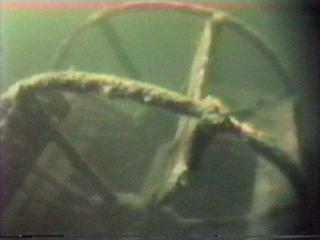![]()
The Mayflower was an ugly, wooden, stern-wheel paddle-ship that plied the waters of Lake Kamaniskeg. There was no thought to her form or design when she was built. She was seventy-seven feet long and looked like a barn-like box sitting atop an almost flat hull. The Mayflower was built for Ontario's pioneering days. Civilization in Eastern Ontario was rapidly in progress and she made her mark in history by carrying passengers and freight. The Mayflower would also be seen shepherding long floating log booms. The ship was reserved to carry corundum from a very large mine at Craigmont to the rail-yard in Barry's Bay. The mining of corundum along the York River was a major industry in the early 1900s. Over 2000 people worked in the Craigmont mines in 1910. When the owners of the mine started to use their own steamships, it forced the Hudson brothers to find other business. That is when they started to carry passengers, mail and freight to keep her in operation. The Mayflower would have lived and died without fame if she had stayed on as an ore carrier. Having carried people to their destinations gave her notoriety, and her mysterious death gave her respect which is placed high on the list of Renfrew County disasters. It is said the ship went down so fast that there was no time to put on a life-jacket. Everyone grabbed what ever they could find to hang on to. A coffin just happened to drift by the wreck and 4 men hung on to that coffin for dear life. Her schedule was one round trip per day from Combermere to Barry's Bay and back. On occasion she would make two runs a day but, since she carried no adequate lights, the double voyage had to be made in daylight. When the sun set early in the fall the Mayflower could only make one and a half trips a day. The ship often started the day in Combermere and ended her voyage in Barry's Bay and the next day she would start in Barry's Bay and end in either Combermere or Palmer Rapids. On November 12, 1912, the Mayflower strayed from her usual route. She travelled the route twice, making her second trip back to Barry's Bay to pick up special cargo. She didn't leave port for the last leg of the second run until hours after she was usually at home in her berth in Combermere. The delay was a coffin that had arrived late from Saskatchewan. Nine people including owner John Hudson died. Three men and the coffin were saved. Actual pictures of the wreck of the Mayflower on Lake Kamaniskeg   The Boiler The Engine  The Paddle Wheel |